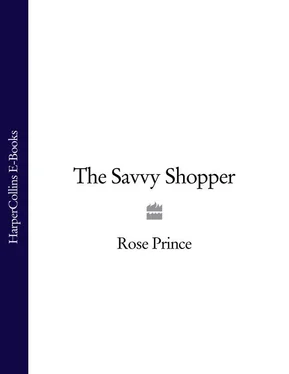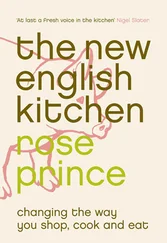As it stands in the UK, seven plants that could be used in animal feed have Part C approvals from the EU, meaning that they are licensed to be sold. Two of these are herbicide-tolerant and insect-resistant maize varieties (made by the biotech firm Syngenta); two are herbicide-tolerant maizes (made by Bayer and Monsanto); there is an insect-resistant maize and a herbicide-tolerant soya bean (both made by Monsanto) and finally a herbicide-tolerant oilseed rape (made by Bayer). Three of the maize crops are licensed for cultivation in the EU, although none has yet been grown here. A larger number of GM crops are licensed to be grown outside the EU, in North and South America, South Africa, China, India and other parts of the Far East.
The US Department of Agriculture estimates that 46 per cent of the US maize crop and 93 per cent of the soya bean crop is genetically modified., More than 98 per cent of soya and 55 per cent of maize grown in Argentina is GM.
But can you tell if food is GM or has GM ingredients? In 2004 the EU established new rules for GM labelling: any food sold in the EU that is genetically modified or contains GMOs (genetically modified organisms) must carry this information on the label (or immediately next to non-packaged food). The presence of GM ingredients in ready-made foods (e.g. flour, oil, glucose syrup) must be shown on labels, but products made using GM technology (cheese produced with GM enzymes, for example) do not have to be labelled. Meat, milk and eggs from animals given GM feed also do not need to be labelled. Food that accidentally contains less than 0.9 per cent approved (by the EU) GM ingredients or 0.5 per cent non-approved GM ingredients need not be labelled. You can see why detractors of GM insist that gradual GM contamination of our food is taking place.
In January 2006 the organic sector reacted with horror when the EU announced plans to allow food to be labelled organic even when it contains 0.9 per cent of GM ingredients. The Soil Association says that any more than 0.1 per cent is unacceptable. They and the other environmental organisations are now campaigning against the EU plans.
The European Food Safety Authority (EFSA) tests GM foods on a case-by-case basis, deciding whether to permit them to be sold in Europe after public consultation and referring to the various relevant food safety and agricultural authorities in member states. In the UK this means the Food Standards Agency (FSA) and the Department for the Environment, Food and Rural Affairs (DEFRA). Both the FSA and DEFRA have not exactly spoken out against GM, so it is no wonder its opponents are concerned. Shoppers are quite justified in opposing GM. To take part in public consultations regarding the licensing of GM crops, keep an eye on the EFSA website, www.efsa.eu.int.
Pesticides and other chemicals
For descriptive ease, I have used the word pesticide in this book as a cover-all term for agricultural chemicals, which include weed killers (herbicides) and fungicides.
In September 2004 the Royal Commission on Environmental Pollution (RCEP) issued a serious warning about the effects of pesticides and our government’s failure to tackle the issue. The RCEP report covered health risks to bystanders and residents exposed to the use of pesticides on land near their homes. Its recommendations included a re-think of how risk itself is measured, making it clear that current risk assessment is inadequate. The lobby against pesticides is understandably elated at the report, but its concerns about pesticides are much wider. It alludes to the dangers farmers all over the world face when handling pesticides, the pollution of the environment, depletion of the ozone layer and the long-term effects of hormone- and endocrine-disrupting chemicals on human and animal reproductive systems.
In 2005 agricultural chemical watchdog, the Pesticides Action Network UK (PAN UK), published the List of Lists, detailing all the hundreds of dangerous pesticides in use around the world and how they can affect us. This list, which is too long to be included here, can be obtained from PAN UK, www.pan-uk.org.Thanks to the campaigns of environmental organisations including PAN UK, various worldwide conventions on pesticide use have ruled that many on the list (including the better-known poisons, DDT and lindane) can now be used only with prior consent between the importing/exporting countries. However, three on the list, namely aldicarb, DBCP and paraquat are not yet internationally regulated.
In the UK the government-backed Pesticide Residues Committee tests samples of food from various groups four times a year, and publishes the findings on the internet. For each pesticide it has established a Maximum Residue Level (MRL) to enable it to measure the safe use of pesticides. Council-funded local trading standards offices also test for pesticides. Anti-pesticide voices claim that MRLs are not low enough and pesticide residues are found on far too many everyday fruits and vegetables. They also say that the ‘cocktail effect’ of multiple residues poses the real danger.
The Soil Association, which operates the most stringent standards in the UK organic farming sector, permits its members in special cases to use six agricultural chemicals on crops: copper, sulphur, rotenone, soft soap, paraffin oil and potassium permanganate. They may use pyrethroids in insect traps. Those that defend the use of pesticides as a whole will always leap on this fact when attacking organic standards to weaken the position of the organic sector. It is a slim argument, taking into account the 450 or more chemicals available to conventional farmers and the fact that each individual organic farmer must go through hell and high water to get permission to use one of the six on a crop. The Soil Association argues that the pesticides they permit are either of natural origin or simple chemical compounds compared to the complex chemicals used in conventional farming.
As far as savvy shoppers should be concerned, the traceability of organic food and its comparative freedom from residues is a standard to chase. Farmers who strive to reduce pesticide use and reintroduce wildlife to farms, like those signing up for the environmentally concerned farming scheme, LEAF, should be encouraged – if not quite celebrated. But while no ideal system is in wide use, buying seasonally and locally boosts trust and is good value for money. Viewed another way, it is easier to check up on the tomato grower down the road than the one in Brazil.
Organic versus conventional
Organic is a great standard, especially when a producer has Soil Association accreditation, the most stringent in Europe. But conventional can mean high standards, too. It depends on the producer, and that is why buying food is a confusing business. A farmer might produce food responsibly but prefer not to go through organic conversion, which can be an expensive investment.
The organic movement (specifically the Soil Association in the UK) was founded on the principle of the holistic benefits of ‘soil health’. It recognises a connection between human health and that of the soil. Organic crops grow in healthy soil fertilised with natural manures. Organically reared livestock are naturally fed on organically grown feed and standards of welfare are exceptionally high. But is this better than a responsible conventional farmer?
I have visited farms where enormous care is taken to prevent animal and plant disease through good husbandry, but which are not organic. They keep hedgerows, leave buffer zones between crops and hedges and, like organic farmers, will not spray unless absolutely necessary. I know farmers who care for their livestock, stock them loosely, give them proper shelter and plenty of water, and grow all their feed. Their animals are rarely ill or stressed and are totally traceable – but they are not organic. Some of the best cheeses, hams and even potato crisps in the UK are made by responsible, non-organic farmers.
Читать дальше












